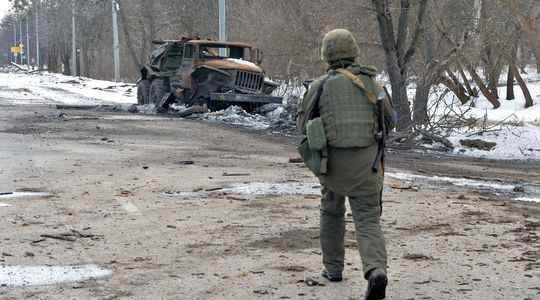Long before the invasion of Ukraine by the Russian army on February 24, the idea that the world was entering a new “cold war” was fairly widely shared by experts in international politics. The prolonged and dangerous competition, in the gray zone which separates peace from war, has been a fundamental fact of history since the Peloponnesian War which saw the collapse of the Athenian empire under the blows of Sparta, after thirty years of rivalries.
The Cold War, this “twilight struggle against the Soviet Union” as John Kennedy called it, was a period of total competition, ideological, economic, technological, between West and East, which lasted almost half -century. It ended with the resounding victory of the Western powers, the triumph of democracy over authoritarianism, of the market economy over the centralized economy, which opened in the United States a long period of influence on the whole world.
But thirty years of relative calm will finally give birth to a failure: contrary to the objective targeted by the United States, neither Russia nor China wanted to become stakeholders in the new Western order. On the contrary, Moscow and Beijing saw in American policy not a factor of stability but a threat against their security and their power.
Lessons to be learned from the previous crisis
This stability in the world order has therefore crumbled for a number of years before suddenly collapsing on February 24th. Whatever the outcome of the war in Ukraine, the coming period will probably be marked by increased competition between the United States and Russia, but above all Chinawhose desire to redraw the map of the world and make autocracy the new universal value should become even more intense.
It is therefore a cold war of a new kind which risks settling in for a long time and seriously threatening the prosperity and stability of the Western world. Are there any lessons to be learned from the previous one to conduct today’s more effectively?
Hal Brands is convinced. Historian, specialist in American foreign policy, professor at the Johns Hopkins Institute of International Affairs, author of numerous books, consultant for the administration and intelligence agencies, he delivers an in-depth analysis of the “first era” Cold War, in order to draw strategic lessons for that of today.
“We have once again entered into a global struggle for power and world order”
Certainly, admits the author, history alone cannot help us solve today’s strategic problems. “Events are like snowflakes, none of them are exactly alike,” he writes. But we have nevertheless once again entered a global struggle for world power and order, a struggle between systems and values, and an increasingly gray zone between war and peace.
The revision of the American strategy
To fight on equal terms with China and Russia, the Western world, and particularly the United States, must adopt a “strategy” like that of the “containment” advocated by Georges Kennan in 1947 to stop the extension of the Soviet zone, and which was probably the golden age of American foreign policy.
Waging this new cold war forces America to make strong choices in terms of economics, influence over international organizations, alliances, if it intends to confront aggressors, fight for its values and prevent any hostile power from amassing enough resources to threaten it. This would mean that Joe Biden decides to break with the policies carried out in recent years and which organized a more or less orderly withdrawal of the United States from the affairs of the outside world.
The decisions he made to massively support Ukraine in money and arms seem to indicate that such a review is in progress. But we must not forget another fundamental lesson of the Cold War: It is a long-term affair.
“The Twilight Struggle: What the Cold War Teaches Us About Great-Power Rivalry Today” by Hal Brands, Yale University Press, March 2022.
Rating 4/5
